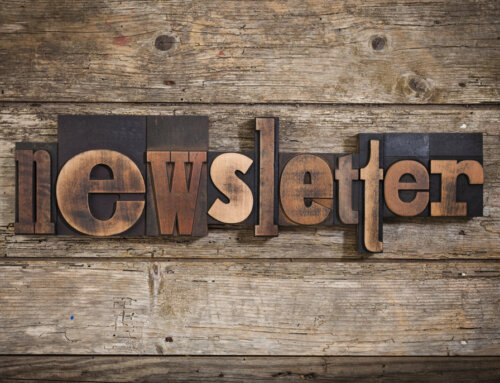Email marketing continues to be a ‘go-to’ strategy to build brand awareness, drive customer engagement, nurture prospects, generate leads and increase revenue generation. But, like any marketing strategy, email marketing comes with its own set of challenges. As a cornerstone of digital marketing, email marketing offers unparalleled reach and efficacy, but it also comes with a myriad of challenges that need to be overcome, in order to be successful and achieve the impact and results you’re looking for. You will also find ‘converting strangers to valuable customers useful.
Here, we’ll delve into the five key ailments affecting successful email marketing and prescribe a some remedies for success.
1. The quest for subscribers
Building and retaining a loyal subscriber base continues to be a formidable challenge. Whether you’re looking to attract B2B or B2C, getting and retaining subscribers is one of the most common email marketing challenges. In a world inundated with free digital content and digital noise, convincing a website visitor in the value of parting with their valuable details can be tough.
The hard part is making people want to sign up: what’s in in for them, what value will they gain from signing up. Remember, just having a sign-up form on your website isn’t good enough. You need to show them why it’s a great idea by telling them all the good stuff they’ll get as subscribers.
According to Hubspot, its normal to see a visitor conversion rate of < 1%. In other words less than 1% of your website visitors will complete a subscription form. Now of course that will vary between websites. But this underscores the difficulty in capturing audience interest and trust.
Solution
Engaging content, enticing offers, and transparent communication will help you to attract and retain subscribers. Be prepared to be generous with your content and knowledge – share value, that will entice your audience to come back. Leveraging various touchpoints such as social media, website pop-ups, and gated content can effectively funnel prospects into the subscriber pool. But this comes with a word of caution, don’t distract or bombard before visitors can see the value they get from you.
Craft compelling and relevant content is key. Its important to understand your audience’s pain points, desires, and interests. Then, deliver content directly addressing these needs, whether it’s informative articles, how-to guides, or special promotions.
- Simplify sign-up processes and clearly communicate the benefits of subscribing
- Segment your list: Divide your subscribers into smaller groups based on demographics, behaviour, or interests. Tailoring your emails to these segments increases relevance and engagement.
2. The scourge of spam
Spam remains a pervasive issue in email marketing, with data from Statista indicating that approximately 45% of all emails are classified as spam. Despite stringent regulations and sophisticated filters, legitimate marketing messages often get lost in the clutter, diminishing campaign effectiveness.
Spam can significantly impede the effectiveness of any email campaign. The problem arises when emails sent end up in recipients’ spam folders rather than their primary inboxes. This will of course reduce the effectiveness of your email marketing efforts.
One of the primary contributors to high spam rates is the content of the email itself. Certain words, phrases, or practices can trigger spam filters and algorithms, causing emails to be filtered into spam folders. Added to this is the reputation of the sender’s domain and IP address, which can also affect deliverability.
Solution
Crafting concise, relevant, and permission-based content is paramount to circumventing the dreaded spam folder. Maintaining a clean and updated subscriber list will also help considerably
- Use a reliable ESP (email service provider):A trustworthy email service provider can help maintain your sender reputation by sticking to best practices and complying with email regulations.
- Regularly clean your email list. Remove inactive or bouncing email addresses. An increase in bounce rates can affect spam filters
- Use authentication protocols like SPF and DKIM
3. Unlocking low open rates
Low open rates plague many email campaigns, with variable benchmarks depending on the industry, which can vary from 15% to 39%. However the accuracy of these is also open to interpretation as emails can track a ‘false open’ which happens as emails pass security scrutiny and firewalls.
Low open rates occur when a significant portion of the emails sent fail to capture the attention of recipients and remain unopened in their inboxes, or simply get deleted. One key contributing factor is the subject line of the email. If the subject line fails to engage the recipient or is not relevant it will likely be ignored.
Also, the timing of email delivery can play a significant role in open rates. Sending emails when recipients are less likely to check their inboxes can result in emails getting buried and overlooked.
Solution
Tailoring subject lines to pique curiosity, segmenting audiences for targeted messaging, and adhering to optimal send times are potent antidotes to combat low open rates. Additionally, A/B testing various elements of the email, from content to design, experiment with different subject lines can uncover the winning formula to captivate audiences and increase open rates.
- Test variations in tone, length and urgency to identify what is the most effective
- Personalise subject lines and email content
- Send emails at optimal times – when you believer your audience habits makes them more likely to open your email
- Avoid spammy words in your subject lines, and try to avoid using terms like ‘guaranteed’ or ‘free’.
4. The art of personalisation
Generic email blasts are less likely to resonate with your audience. SmarterHQ indicate that 74% of them express frustration when content is not personalised. This disconnect highlights the importance of delivering tailored experiences that speak directly to individual preferences and interests.
Achieving personalisation requires capturing and access to data on your subscribers preferences, behaviours and demographics. Personalisation is all about making your subscribers feel like your speaking directly to them, and that goes beyond using their first name.
Solution
Embracing the power of personalisation – from addressing subscribers by name to tailoring content based on past interactions and preferences – fosters a deeper sense of connection and resonance.
Leveraging data analytics and automation tools can enable you to deliver bespoke experiences that nurture long-term loyalty and engagement. Gather as much data as you can on areas of interest, pain points, browsing behaviour, website pages visited, and content they have engaged with.
- Use content and recommendations based on past interactions. Show you understand your subscribers interests
- Use email tools and automation to allow you to personalise what you send
- Segment your audiences where you can
5. Amplifying click-through rates
Despite efforts to drive engagement, click-through rates on your emails remain frustratingly low. This tepid response underscores the challenges businesses face of converting audience interest into tangible action and conversion.
This problem occurs when recipients open emails but do not take the desired action (the action you would like them to take), such as clicking on links or buttons within the email. Low click-through rates indicate that the email content or design fails to sufficiently engage and persuade recipients to interact further with the email.
It’s also worth remembering that you are competing for your recipients share of time. Think about the number of emails you receive in your work and private inboxes – which ones do you choose to open, and from those which ones do you click on a link? Walk in your audiences shoes.
Solution
Compelling calls-to-action, seamlessly integrated within the email body, serve as potent catalysts to drive click-through rates skyward. Crafting concise, action-oriented copy, accompanied by visually appealing design elements, can enhance the allure of CTAs, enticing subscribers to embark on the journey from curiosity to conversion. But make sure you test email formats, what seems like a visually appealing email may be seen as time wasting marketing versus a test only version that is heavily personalised.
- Keep emails concise and focused: Avoid overwhelming recipients with too much information. Each email should have a clear and specific message or offer. Too much clutter can lead to confusion and reduced click-through rates
- Experiment with buttons instead of text links: Buttons are more visually prominent and tend to attract more clicks than plain text links. Make sure they are well-designed and contrast with the background.
- A/B test different elements: Continuously experiment with different email elements
- Experiment with text only emails
email marketing – your prescription for success
Successful email marketing is a combination of art and science. Data and statistics illuminate the magnitude of challenges faced by businesses trying to engage with their audiences. However, armed with strategic solutions and a data-driven approach, you can navigate these hurdles.
The solutions will guide you to overcome some of the biggest challenges in email marketing. Remember, email marketing is an evolving field, so stay up-to-date with best practices and continue to test and experiment.
Key email marketing metrics to pay attention too. This is a guide to the metrics you should consider tracking:-
- Delivery Rate– Successful deliveries as a percentage of list size.
- Open Rate– Number of subscribers who open as a percentage of emails delivered.
- Click Rate– Number of clicks within an email as a percentage of opens.
- Unsubscribe Rate – Number of recipients who unsubscribe as a percentage of emails delivered.
- SPAM Complaints – Total number of recipients who mark the email as “SPAM” or junk for each email send.





